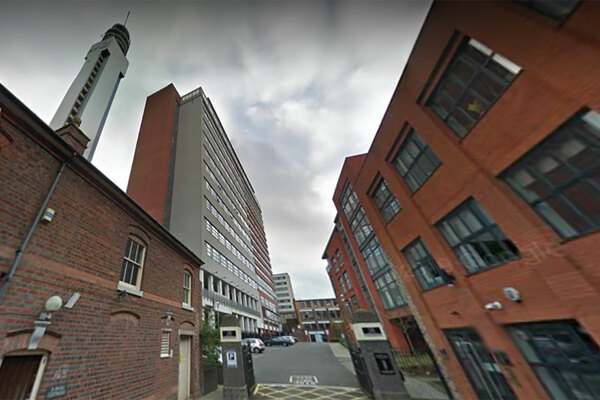
Difficulties obtaining PI insurance must be addressed if we are to fix the building safety crisis
Difficulties in securing the requisite insurance is slowing efforts to remediate unsafe buildings. We need the government to act, writes Andy Tookey
Inside Housing’s readers will be familiar with a whole host of issues surrounding the difficulties they and their leaseholders face in relation to building insurance premium hikes for high-rise blocks with potentially dangerous cladding.
What should be equally apparent is the impact of professional indemnity (PI) insurance availability, level of cover and premiums to construction professionals in the marketplace.
We find ourselves in a place where building owners are being understandably criticised over slow progress with safety remediation works, but difficulties in finding PI on acceptable terms is without question limiting capacity to make fast enough progress.
“If the Grenfell Tower Inquiry has taught us anything, it is that the complexities and fragmentation of the sector and the industry that serves it means that we have a collective responsibility”
The PI market had been pretty soft in the years running up to the Grenfell tragedy, but the volume of claims globally has risen dramatically in the past 12 years and the lack of profitability led to approximately 25% of the insurance capacity exiting the UK market.
In reality, this translates to increases in premiums by anything from 20% to 800%, restrictions in cover relating initially to cladding, but more widely now to fire safety – manifesting itself in ‘in-the-aggregate’ caps (rather than each and every claim) plus limitations to direct, rather than consequential losses.
Added to this, excesses around cladding and fire safety are significantly increased and, in some cases, applied to each and every building. For some professionals their PI insurance might exclude fire safety claims altogether.
Moaning about this is futile. The industry is fully aware of its shortcomings of the past and the need to reform. Likewise, insurers are very clear that the extent of the problem, as we sit here today, is far from known.
That said, we are looking at an endemic problem and if the Grenfell Tower Inquiry has taught us anything, it is that the complexities and fragmentation of the sector and the industry that serves it means that we have a collective responsibility – government, designers, contractors, developers, consultants and manufacturers.
The response has been positive, reflected in most organisations putting measures in place to address quality in design and construction and being able to demonstrate compliance to provide the ‘golden thread’.
The government’s response in reforming building regulations and the requirements under the Building Safety Bill are clearly welcome but the new roles, as defined, do not currently exist and will require training, upskilling and of course insuring – this will be equally troublesome whether this role is performed in-house or outsourced.
The demand for an increased supply of high-quality, safe new buildings is known and the urgent need to remediate unsafe existing buildings is obvious, but we need a collective grown-up conversation about how we can avoid a stagnation of the market or chance blindly, continuing in an unsustainable and risky way.
When I had the opportunity at the back end of last year to seek Dame Judith Hackitt’s view on this, she told me that we needed to look at different ways of approaching insurance to protect the end user.
There are, in my opinion, a few areas for us to jointly and collaboratively explore:
- Compliance – as I said before, a significant proportion of the industry is aware of the need to upskill and prove competency. No longer can we rely simply on professional qualifications for certain projects and some great work has started on this via the Construction Industry Council’s Setting the Bar report. In future, there should be less excuse for getting it wrong and some form of competency or licensing could be a pre-requisite to obtaining PI insurance in return for insurers’ reasonable terms and conditions of cover.
- A ‘Pool Re’ type of approach – this was adopted in the 1990s when property insurers were reluctant to provide terrorism cover to commercial buildings. The concept is based on an insurance mutual, with a pool of insurers as members, paying a premium to Pool Re to enable them to offer terrorism cover under a commercial property insurance, in the event of a claim. This fund has an unlimited backing from the UK government in the event that the pool premium is exhausted, which has never happened in more than 25 years.
- Perhaps more controversially, a form of project-specific or alliance insurance, as piloted at Dudley College. Insurers currently seem reticent to provide this type of insurance, but it must be worthy of further investigation.
If we don’t address the problem, I think we can look forward to concern from the sector about the capacity of professionals to provide fire engineering advice and the insurance cover enabling them to sign off EWS1 forms.
I hear frustration from clients and consultants alike in relation to the over caution accompanying professionals’ advice and guidance, but this must be taken in the context that they are constrained by the potential liability burden, which limits their ability to properly risk manage and innovate in giving their advice.
Finally, we can also look forward to ongoing difficulties in agreeing uninsurable contract clauses, which has already translated into businesses simply walking away, or manifesting itself in prohibitive cost increases – resources that should be much better spent in properly upskilling the industry and providing better and safer buildings.
Andy Tookey, managing partner, Baily Garner
Sign up for our fire safety newsletter
Already have an account? Click here to manage your newsletters
Sign up for our Retrofit Challenge Virtual Summit
If topics such as those mentioned in the above article are of interest to you, register for our Retrofit Challenge Virtual Summit here.













